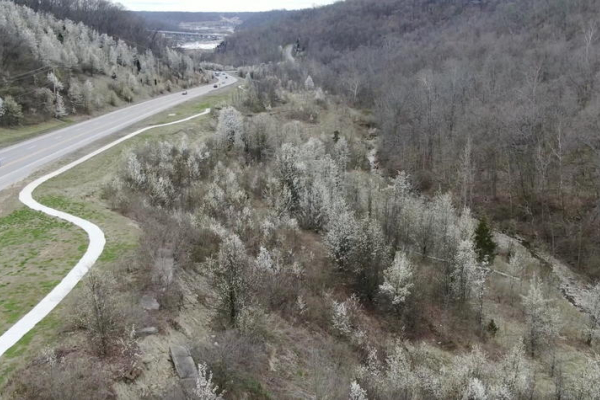Algae CO2 Capture Part 2: Imagining the Future
If, in the future, the University of Kentucky Center for Applied Energy Research got the funding to install 100 acres of algae tubes to take coal flue gas and make jet fuel, what would that look like? That task was given to UK College of Design students.
Architecture students and faculty understood the needs of this type of technology having designed theoretical proposals for algae systems before. However, Duke Energy's support of CAER's concept gave them an opportunity to develop a potential real-world solution.
"It’s a great opportunity to work with these students because their creativity is unlimited," Groppo said. "They are enthusiastic, they have great ideas, and they are just not confined by anything, which is refreshing. You can see the raw enthusiasm when we open up the greenhouse doors, and when they look at those same tubes, they are just overwhelmed, and the questions just begin flowing."
Under the direction of Assistant Professor Anne Filson, last spring UK students were charged with imagining the future by designing an algae research facility and conference center within a 100-acre demonstration bioreactor on the East Bend Station property. CAER wanted to see what fresh eyes could bring to the project.
The CAER’s team introduced students to the fundamental principles of algae growth, bioreactor design, and serviceability, which gave each student a functional foundation to explore architectural innovation.
"My students are looking at it as this really amazing surreal landscape that must be experienced," Filson said. "All of them are looking at ways to choreograph the movement through the algae bioreactors, what is it like to approach it, to drive through it, to get out of your car and walk up to a research lab within it, and how does this landscape inspire people to think about energy in a new way."
An algae bioreactor and research facility on the site of a massive coal power plant is a project without precedent, making it a powerful student problem.
"It really creates the perfect architecture project, where there is a big landscape of hundreds of acres of algae bioreactor tubes, with ancillary buildings that would house laboratories for researchers, processing facilities to process the algae into useful mediums like biofuels and jet fuel, and it also presented a fascinating challenge to provide accommodations for the vehicles, materials, and people that would be moving on and off the site," Filson said.
The CAER project served the College of Design’s mission to provide students with the opportunity to apply rigorous design research and architectural thinking to address the unique environmental issues facing Kentucky. Additionally, the project simulated real-world professional conditions, by offering students opportunities to engage CAER’s experts and Duke Energy’s client team to assist in the development of ambitious and innovative architectural proposals for East Bend.
"It’s been a great education from a sustainability standpoint," Filson said. "We’re learning and talking every day about how do we transition from a coal economy and coal energy to alternative fuels…slowly, steadily, and how do we participate in that transition."
But as students look for answers to the questions surrounding the alternative energy technology, they haven't forgotten the value of design.
"You’re talking to engineers. They are more concerned about whether it is going to work or not," said architecture senior Robert Pekrul, of Lexington. "Taking that functionality and adding an artistic value to it, is what we are really trying to do here. Because that’s what we do, we design."
More from this series Research Priorities - Energy
Credits
Produced by Alicia P. Gregory, videography/direction by Chad Rumford (Research Communications), text by Whitney Hale (UK Public Relations).


